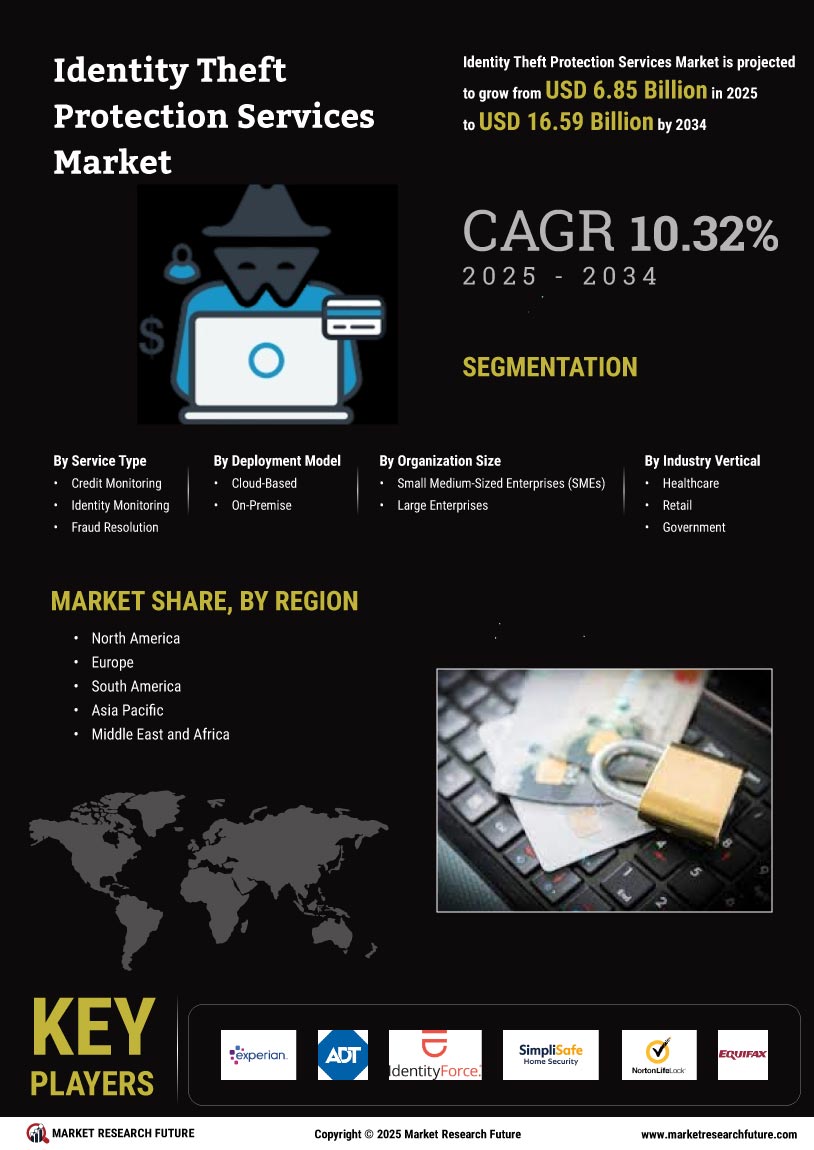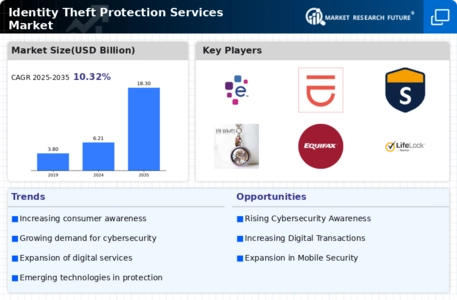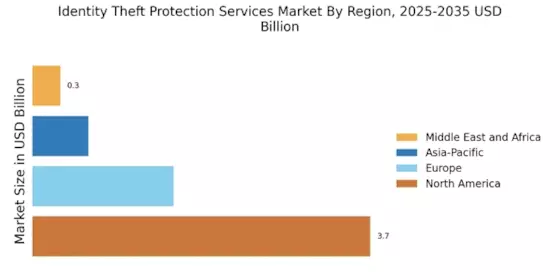Growing Regulatory Requirements
The evolving regulatory landscape is a significant driver for the Identity Theft Protection Services Market. Governments worldwide are implementing stricter regulations to protect consumer data and privacy. For instance, regulations such as the General Data Protection Regulation (GDPR) and the California Consumer Privacy Act (CCPA) impose stringent requirements on businesses regarding data handling and breach notifications. As organizations strive to comply with these regulations, the demand for identity theft protection services is likely to increase. Companies are recognizing the necessity of investing in these services not only to protect their customers but also to avoid hefty fines associated with non-compliance.
Rising Incidence of Identity Theft
The increasing frequency of identity theft incidents is a primary driver for the Identity Theft Protection Services Market. Reports indicate that millions of individuals fall victim to identity theft each year, leading to substantial financial losses and emotional distress. In 2025, the Federal Trade Commission reported a notable rise in identity theft complaints, with a significant percentage involving credit card fraud and account takeovers. This alarming trend compels consumers and businesses alike to seek robust protection services. As awareness of these threats grows, the demand for identity theft protection services is expected to escalate, prompting service providers to innovate and enhance their offerings to meet consumer needs.
Increased Consumer Awareness and Education
Consumer awareness regarding identity theft and its repercussions is steadily increasing, serving as a vital driver for the Identity Theft Protection Services Market. Educational campaigns and media coverage have heightened public understanding of the risks associated with identity theft. As individuals become more informed about the potential consequences of data breaches, they are more inclined to seek protective measures. Surveys indicate that a significant portion of the population is now aware of identity theft protection services and their benefits. This growing awareness is expected to translate into higher demand for these services, as consumers prioritize safeguarding their personal information.
Expansion of Digital Services and E-commerce
The rapid expansion of digital services and e-commerce platforms is a key driver for the Identity Theft Protection Services Market. As more consumers engage in online transactions, the risk of identity theft increases correspondingly. In 2025, e-commerce sales continue to rise, leading to a greater need for security measures to protect sensitive information. Businesses operating in the digital space are increasingly recognizing the importance of offering identity theft protection services to their customers. This trend not only enhances customer trust but also serves as a competitive differentiator in a crowded marketplace. Consequently, the demand for identity theft protection services is likely to grow as e-commerce continues to flourish.
Technological Advancements in Security Solutions
Technological advancements play a crucial role in shaping the Identity Theft Protection Services Market. The integration of artificial intelligence, machine learning, and advanced encryption techniques has revolutionized how identity protection services operate. These technologies enable real-time monitoring and rapid response to potential threats, thereby enhancing the overall effectiveness of protection services. As of 2025, the market is witnessing a surge in demand for sophisticated solutions that can adapt to evolving cyber threats. Companies that leverage cutting-edge technology are likely to gain a competitive edge, as consumers increasingly prioritize security features in their choice of identity theft protection services.


















Leave a Comment